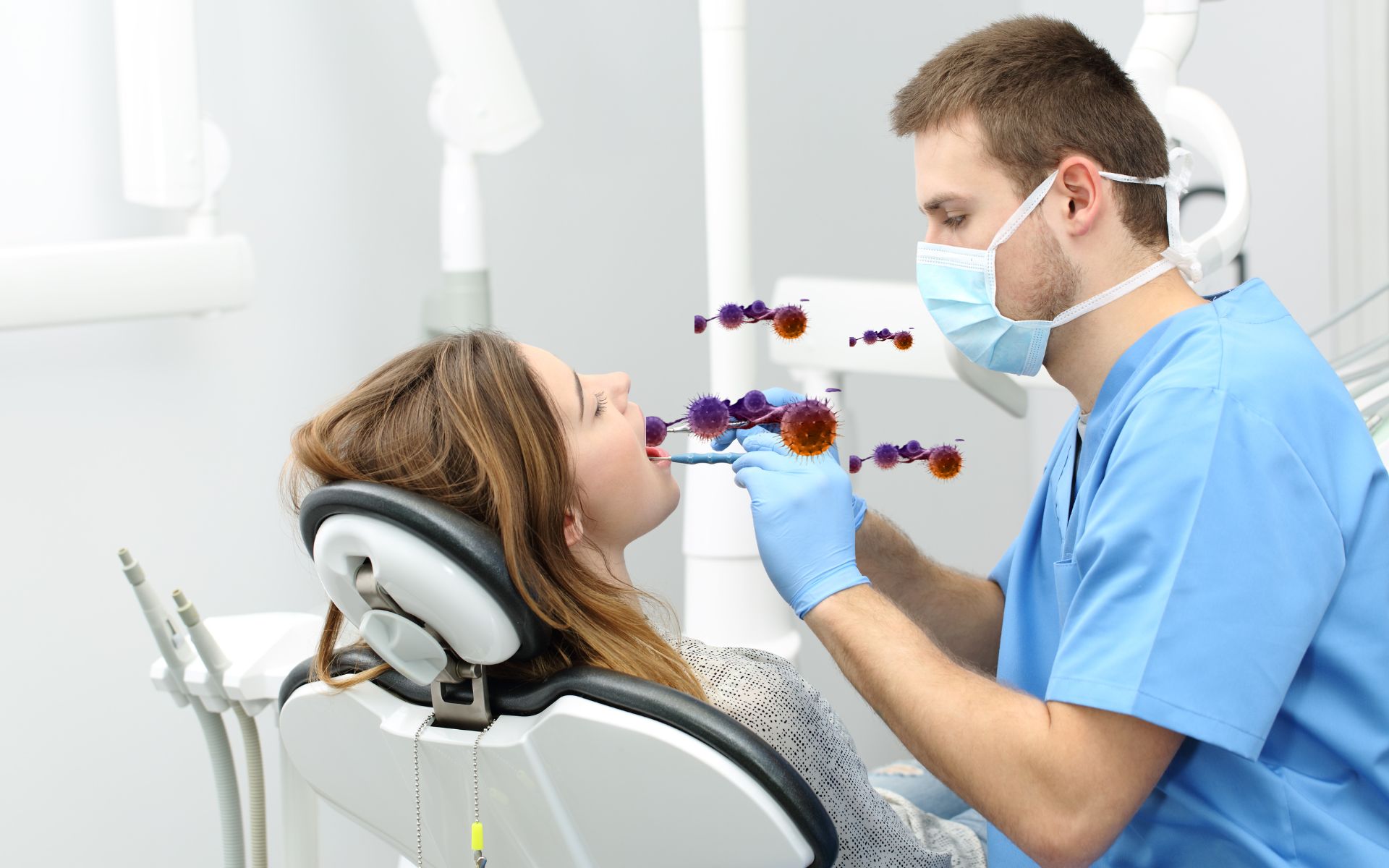Dental professionals are constantly exposed to airborne pathogens, including COVID-19, HBV, HCV, HSV, and HPV, among others. To address this issue, the Dentsafe team has developed an advanced microbial elimination system utilizing negative ion and nano-filter technology. This technology has shown a 99% microbial elimination rate, ensuring enhanced safety for both clinicians and patients. Recent research, such as the study “Synergistic Disinfection of Aerosolized Bacteria and Bacteriophage by Far-UVC (222-nm) and Negative Air Ions” by Lu et al., has highlighted the effectiveness of air ionization and UVC technology in pathogen elimination, further validating the efficacy of the Dentsafe system.
Negative Ion and Nano-Filter Technology in Dentsafe Dentsafe employs a dual-action approach to microbial elimination. By generating negative ions, the device neutralizes airborne pathogens in dental environments. Nano-filters further enhance this protection by physically capturing and eliminating contaminants. This technology forms a protective shield around the clinician’s head, significantly reducing the risk of infection through airborne droplet transmission. The device also integrates an LCD screen for digital photography, allowing clinicians to examine large images without unnecessary exposure to pathogens.
Validation through Scientific Research The study by Lu et al. investigates the combined effects of far-UVC (222 nm) and air ionization in eliminating aerosolized bacteria and viruses. The results indicate that the combination of far-UVC and negative air ions leads to significantly higher microbial inactivation rates compared to using these technologies individually. This reinforces the principle behind Dentsafe’s innovative use of negative ion technology in pathogen elimination.
Synergistic Effects of Negative Ion Technology The research findings highlight the synergy between negative air ions and far-UVC in reducing airborne microbial transmission. The study demonstrated that bioaerosols, including Escherichia coli and Staphylococcus epidermidis, were inactivated more efficiently when treated with both negative air ions and far-UVC than when each was used separately. While Dentsafe does not incorporate far-UVC technology, its reliance on negative ion and nano-filter technology aligns with these findings, providing strong scientific support for its microbial elimination capabilities.
Seamless Integration and Cost-Efficiency Dentsafe is designed for seamless integration into existing dental office setups using pre-existing medical mounts. This design reduces installation costs and enhances ergonomics by ensuring minimal physical strain on the dental professional’s head, neck, and back. The ergonomic design, combined with advanced microbial protection, makes Dentsafe a highly cost-effective and practical solution for modern dental practices.
Conclusion The effectiveness of Dentsafe’s negative ion and nano-filter technology is supported by research demonstrating the powerful synergistic effects of air ionization in pathogen elimination. The study by Lu et al. underscores the impact of air ions in reducing airborne microbial transmission, further validating Dentsafe’s approach. By integrating advanced microbial elimination technology with ergonomic comfort, Dentsafe offers dental professionals a comprehensive solution to ensure their safety and enhance their practice efficiency.
Reference: Synergistic Disinfection of Aerosolized Bacteria and Bacteriophage by Far-UVC (222-nm) and Negative Air Ions.



